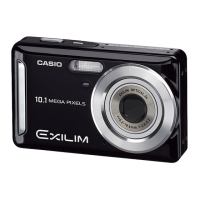
Do you have a question about the Casio Exilim EX-Z29 and is the answer not in the manual?
| Brand | Casio |
|---|---|
| Model | Exilim EX-Z29 |
| Category | Digital Camera |
| Language | English |
Explains the pixel yield of the monitor screen and its implications for image display.
Provides advice to shoot a test image to ensure correct camera recording.
Explains the fundamental operation of digital cameras and image storage.
Explains the feature that automatically detects faces for portraits.
Explains the feature that minimizes image blur from camera or subject movement.
Introduces scene modes for automatic camera setup for perfect images.
Lists the types of memory cards compatible with the camera.
Step-by-step instructions for inserting a memory card into the camera.
Procedure for powering on the camera using the ON/OFF button.
Procedure for powering off the camera using the ON/OFF button.
Addresses issues when the focus frame stays red and the back lamp flashes.
Explains using 'Focus lock' when the subject is not in the center focus frame.
Steps to delete one image file from the camera's memory.
Steps to delete all image files from the camera's memory.
Lists conditions that can make proper autofocus impossible.
Explanation of what pixels are and their role in image detail.
Explains how image size relates to pixel count and detail.
Sets the camera's sensitivity to light for better exposure in different conditions.
Adjusts color balance to match light sources for accurate colors.
Allows selection of date display format (e.g., MM/DD/YY).
Instructions on using optical and digital zoom for framing subjects.
Step-by-step instructions for recording video clips with audio.
Explains BEST SHOT as a collection of scene modes for automatic camera setup.
Displays examples of different BEST SHOT scenes like Portrait, Scenery, Night Scene.
Instructions on how to select and use a BEST SHOT scene for shooting.
Instructions for activating and using the face detection feature.
Instructions on enabling and using Anti-Shake to reduce image blur.
Allows selection of focus area (Spot or Multi) for autofocus.
Guides users through simplified snapshot recording using the Easy Mode.
Allows assigning functions to the directional keys for quick access.
Enables an on-screen grid for easier image composition and alignment.
Allows turning digital zoom on or off to control zoom behavior.
Configures whether an image is displayed briefly after shooting.
Enables textual descriptions for icons displayed on the screen.
Allows selection of image resolution for snapshots.
Sets the image quality priority for snapshots (Fine, Normal, Economy).
Sets the detail, smoothness, and clarity for movie recordings.
Allows manual adjustment of image exposure value (EV) before shooting.
Adjusts color balance to match light sources for accurate colors.
Sets the camera's sensitivity to light for better exposure in different conditions.
Determines which part of the subject is metered for exposure.
Applies color effects to images during shooting.
Adjusts the level of detail and edge definition in images.
Adjusts the intensity of colors in the image.
Modifies the difference between light and dark areas in the image.
Adjusts the power output of the camera's flash.
Instructions for viewing still images on the camera's monitor.
Instructions for playing back recorded movie files on the camera.
Guides on how to magnify and navigate images displayed on the screen.
Enables a multi-image display for quick browsing.
Instructions for setting up and viewing an automatic slideshow of images.
Prepares images for printing by specifying print options via DPOF.
Guides on how to protect specific files or all files from accidental deletion.
Allows rotating images by 90-degree increments for proper orientation.
Enables reducing the size of a snapshot and saving it as a new file.
Allows trimming unwanted parts of an image and saving the result.
Enables recording and adding audio commentary to still images.
Steps to configure camera settings for connecting to a printer.
Instructions for physically connecting the camera to a printer via USB.
Explains DPOF for specifying print options like image type and number of copies.
Lists operations: saving images, transferring files, playback/editing movies.
Procedure to connect camera via USB and set 'Mass Storage' mode.
Guides on how to play movie files using media players.
Instructions for installing the software for uploading videos to YouTube.
Instructions for installing the Photo Transport software for file transfer.
Steps to transfer images from computer to camera using Photo Transport.
Using iPhoto for managing images on Macintosh.
Guides on how to play movie files using QuickTime on Macintosh.
Details on file naming conventions and maximum file counts.
Details on folder naming conventions and maximum folder counts.
Explains the Design Rule for Camera File System (DCF) standard.
Illustrates the hierarchical structure of folders and files on the memory card.
Lists image file types compatible with the camera.
Provides precautions for handling built-in memory and memory cards.
Configures camera to stamp recording date or date and time on snapshots.
Instructions for adjusting the camera's internal clock and date.
Allows selection of date display format (e.g., MM/DD/YY).
Sets the language for the camera's menus and display.
Turns off the monitor screen after a period of inactivity.
Turns off the camera automatically after a period of inactivity.
Sets how the REC and PLAY buttons control camera power.
Selects the USB communication protocol for device connections.
Instructions for formatting built-in memory or a memory card.
Restores camera settings to their original factory default state.
Utilizes the histogram display to check and adjust image exposure levels.
Warns against using the camera while operating vehicles or walking.
Advises against looking at the sun through the viewfinder.
Safety precautions related to using the camera's flash unit.
Precautions regarding handling and potential damage to the monitor screen.
Warning against using non-specified devices with camera connectors.
Precautions for operating the camera in restricted environments like aircraft.
Immediate actions for smoke, odor, or overheating to prevent shock/fire.
Precautions and actions for exposure to liquids or foreign matter.
Immediate actions for damage from dropping or rough handling.
Warning against exposing the camera to fire.
Discourages disassembly or modification, recommending authorized service.
Lists locations to avoid due to humidity, dust, heat, or vibration.
Emphasizes the importance of backing up camera data to other devices.
Guidance on correct battery replacement to prevent data corruption.
Details safe usage, charging, and handling of the rechargeable battery.
Covers battery leakage, fluid exposure, and charging issues.
Provides approximate battery operating times under normal conditions.
Lists actions that can risk data corruption in camera memory.
Specifies recommended operating temperature and humidity ranges.
Provides steps to prevent condensation after temperature changes.
Guidance on cleaning the lens and understanding potential image distortion.
Tips on cleaning the lens, flash window, and camera body.
Specific precautions for handling older rechargeable batteries.
Safety guidelines for using the battery charger unit and its cord.
Notes that slight camera warmth during use is normal.
Outlines restrictions on unauthorized use of images and copyrighted material.
Troubleshooting for the [CHARGE] lamp not lighting or flashing red.
Step-by-step instructions for removing and installing a battery.
Covers battery leakage, fluid exposure, and charging issues.
Guidance on storing batteries to maintain their characteristics and prevent over-discharge.
Information on charger voltage compatibility and power supply requirements abroad.
Recommendation to carry spare batteries for extended trips.
Instructions for removing and inserting a memory card.
Tips on write protection, abnormal behavior, and reformatting.
Information on memory card performance, especially for high-quality movies.
Guidance on data security when disposing of or transferring ownership.
Lists default settings for REC mode menus after a camera reset.
Lists default settings for Quality menus after a camera reset.
Addresses problems like camera not turning on or powering down unexpectedly.
Troubleshoots problems like images not recording or autofocus failing.
Table showing snapshot capacity based on image size and quality.
Details recording capacity for movies based on quality settings.
Provides capacity estimates for voice recordings.
Details voltage, capacitance, dimensions, and weight of the battery.
Details input power, output power, operating temperature, and dimensions of the charger.
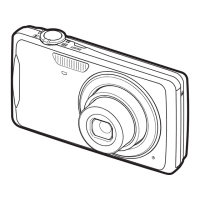
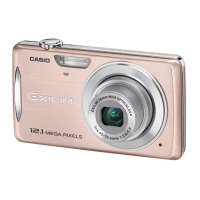
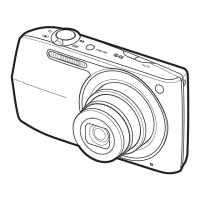
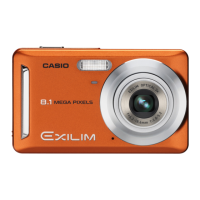
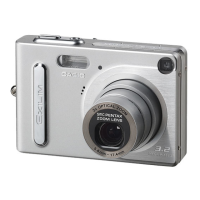
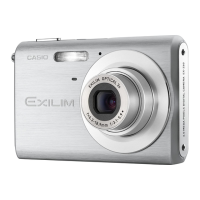
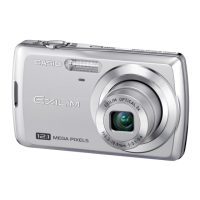
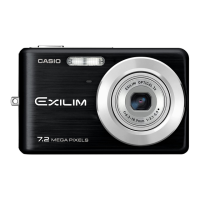

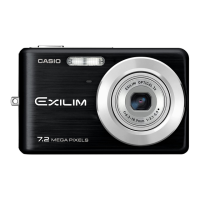
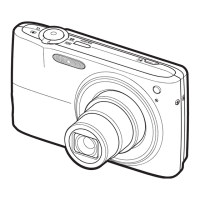
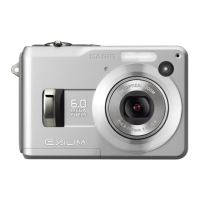
